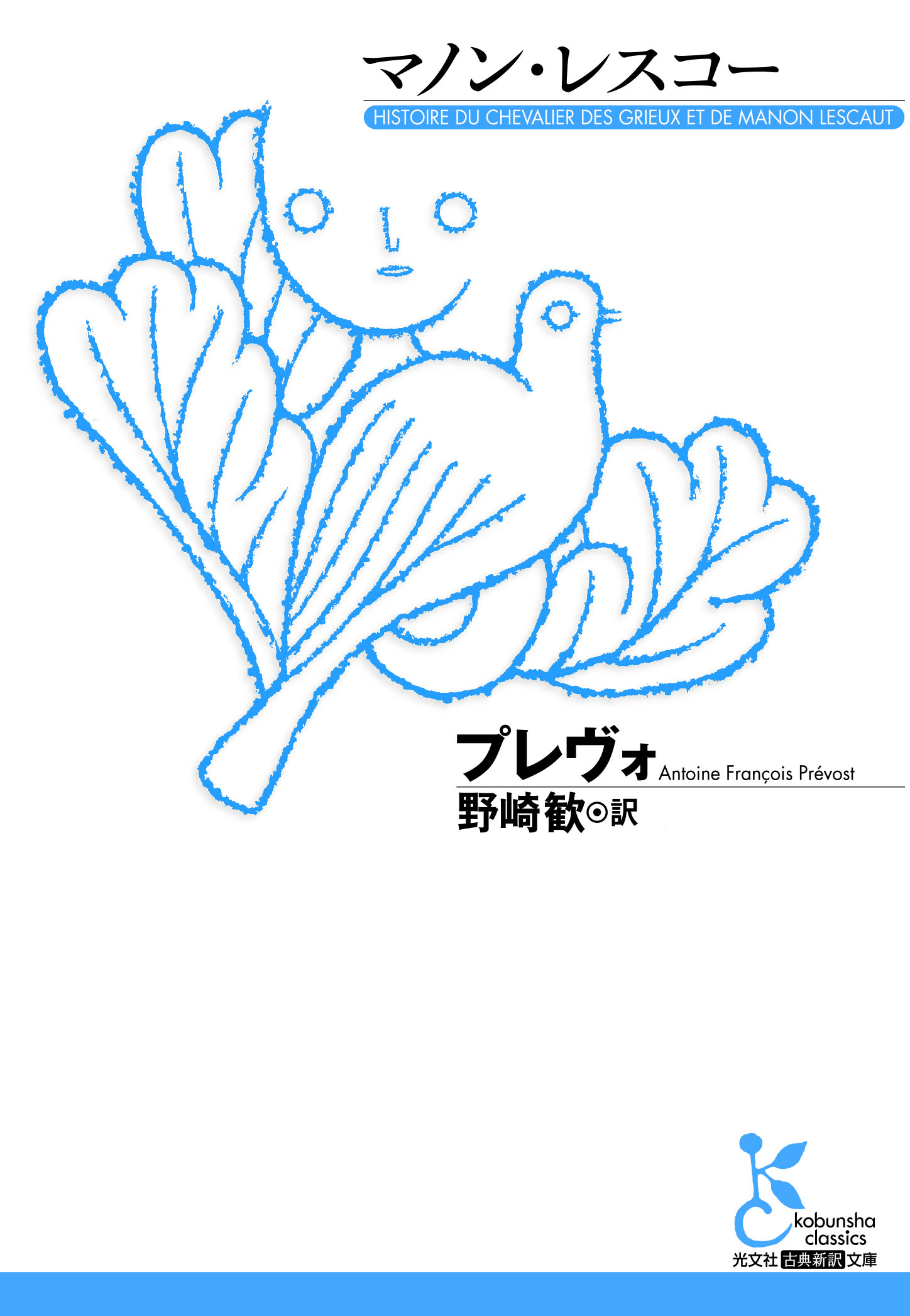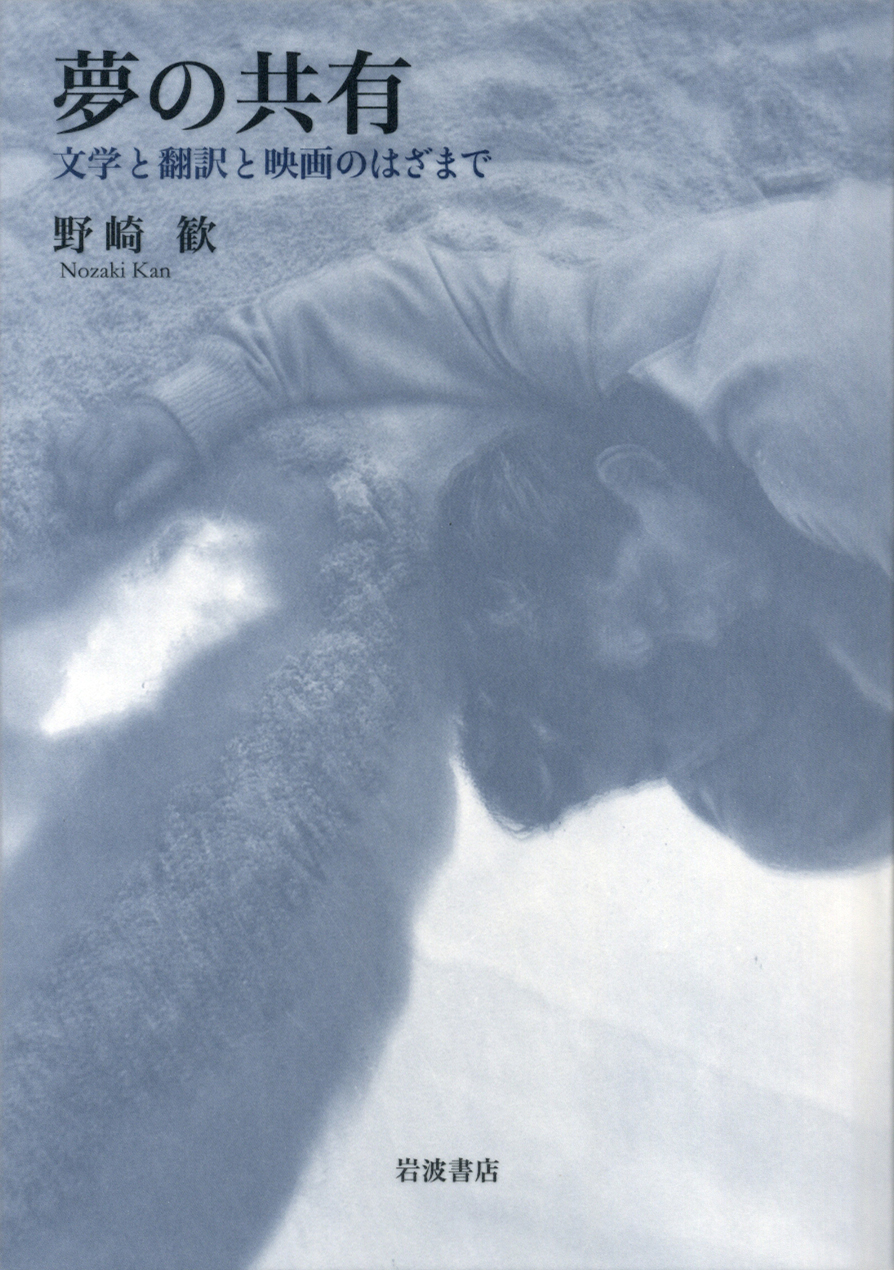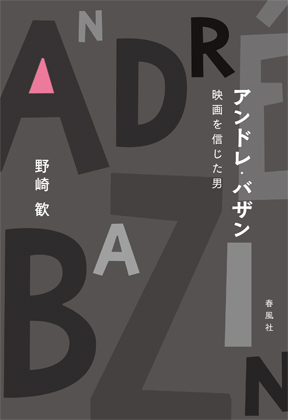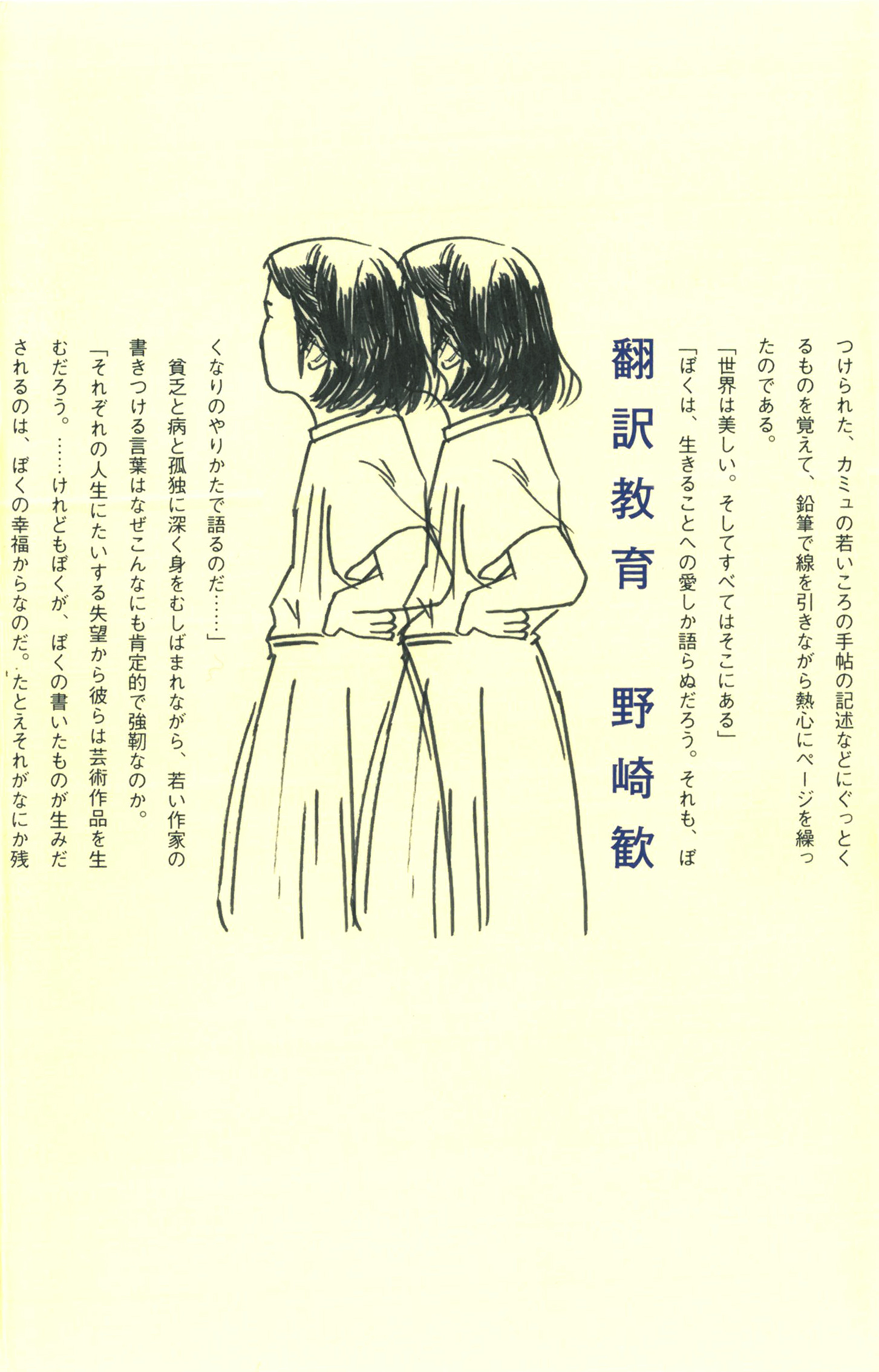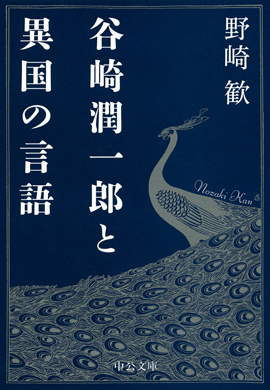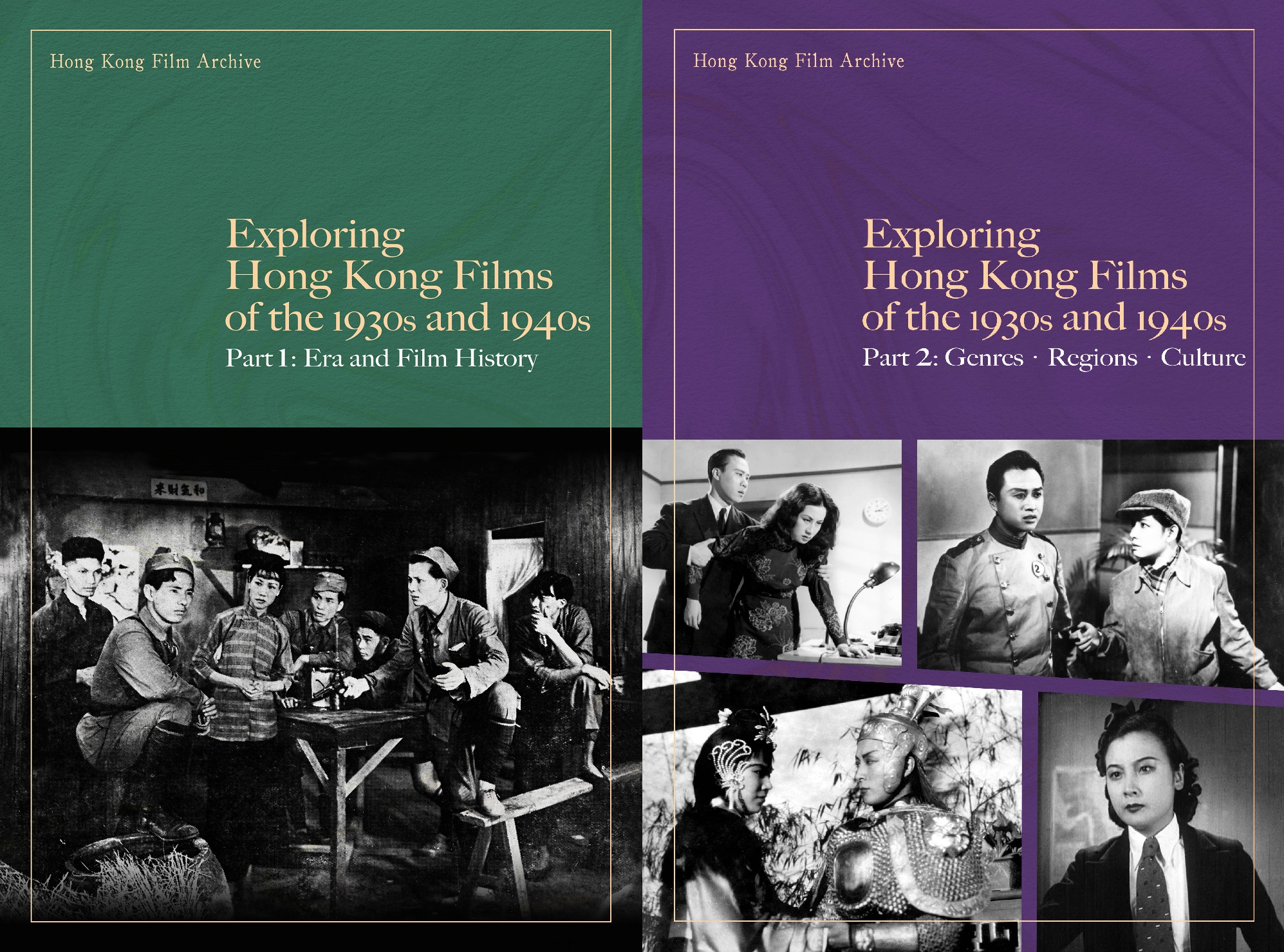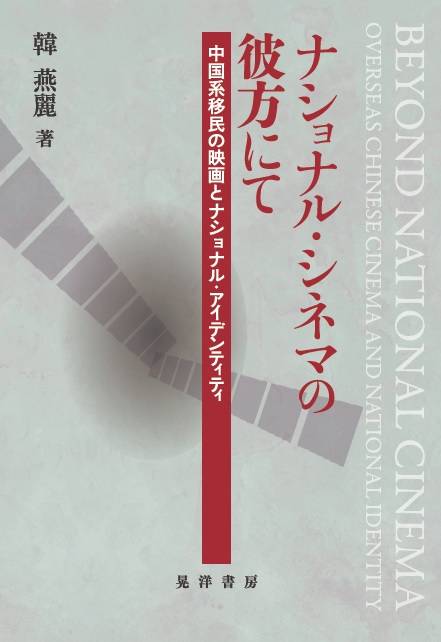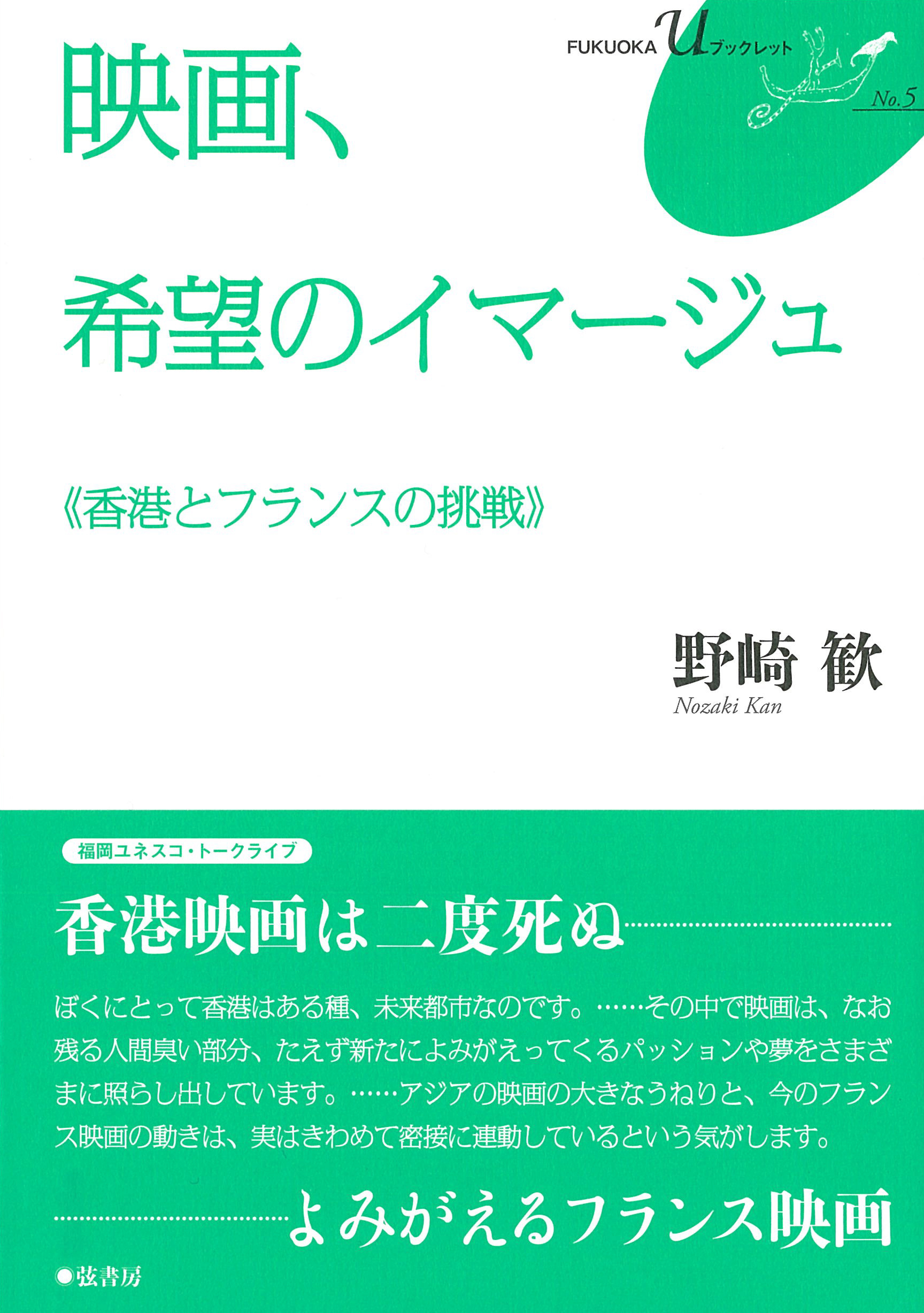
Title
[FUKUOKA U Booklet 5]
Eiga, Kibou no Images
(Film: Images of Hope )
Size
67 pages, A5 format
Language
Japanese
Released
February 15, 2014
ISBN
978-4-86329-097-6
Published by
GenShobo
Book Info
See Book Availability at Library
Japanese Page
This booklet re-introduces the content of two lectures held in Fukuoka City in June 2013, namely “Hong Kong Films Only Live Twice: Challenges since the Return to China” and “21st Century French Cinema: Images of Hope” (sponsored by Fukuoka UNESCO association, cosponsored by Fukuoka City Public Library). At the beginning of the 21st century, in the midst of a radically changing world, the role of cinema as a form of media for scrutinizing and reinterpreting society became more pronounced than ever before. This development was considered in detail by focusing on the two communities of Hong Kong and France. Since authors specializing in French literature are often asked why they discuss films, and why they focus on Hong Kong films in particular, I will provide my own explanation regarding these points.
What is conspicuous in the history of French literature is the incessant revolutionary movements that seek to explore “that which is real.” The effort to scrutinize reality more pointedly and pioneer new forms of expression that are even truer to life is consistent throughout. For example, in the novel genre, after Balzac the questions of how realistically an author can write, and whether he is effective in projecting a sense of realism, became literary objectives. In doing so, visual elements took on great importance, and authors competed with one another to capture reality in depictions that presented even the minutest details. This desire to, in a sense, “visualize” the world, literally foretold the growth of film, which developed as a successor to literature. For this reason, to explore French literature and culture to a greater depth, one has no choice but also to engage with the genre of film.
What is even more important are the independent film movements in France, or more precisely, their direction. The late 1950s saw the sudden growth of a new wave of film, the Nouvelle Vague, whose major figures were François Truffaut, Jean-Luc Godard, and Éric Rohmer. Although the movement itself has already been resigned to the past, from the time that these filmmakers appeared on the scene to today, a “separate” filmmaking development resembling the Nouvelle Vague has been taken up in different places around the world. From a Nouvelle Vague-affected viewpoint at least, such currents can be seen to have permeated international film. Seen through film history, Italian Neorealismo occurs first, immediately after the Second World War, followed by the large-scale inception of the Nouvelle Vague from the late 1950s, the flames of which seem to have quickly leapt to Asia. So, what kinds of films have these movements produced? The short answer is films that are more realistic, that penetrate the heart of reality, and that are made within the context of vivid, living connections with that which is real. Thus, I hope that this simple booklet will be helpful for learning about the current state of Hong Kong and French cinema.
(Written by Kan Nozaki, Professor, Graduate School of Humanities and Sociology / 2017)
Related Info
Keeping Your Bearings with Classical Literature | Kan Nozaki, Professor of Graduate School of Humanities and Sociology
https://www.u-tokyo.ac.jp/en/whyutokyo/voices001.html



 Find a book
Find a book


